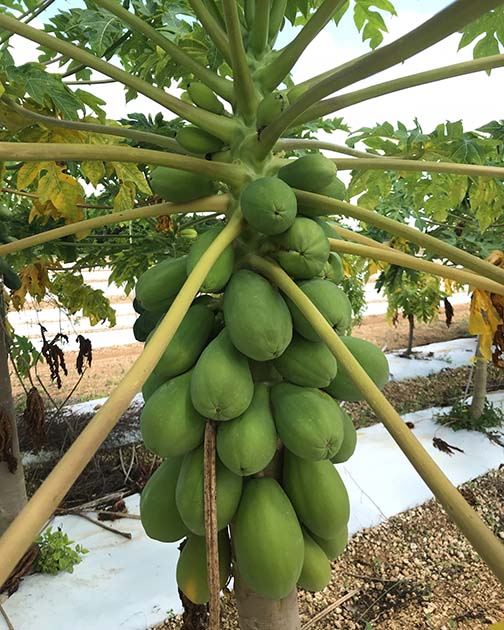
By Clint Thompson
University of Florida/IFAS research yielded profitable options for tropical fruit producers yearning to produce a new crop. That crop is papaya.
“It’s about more options and de-risking the process,” said Alan Chambers, plant geneticist at UF/IFAS Tropical Research and Education Center.
Chambers conducted research at the UF/IFAS Tropical Research and Education Center in Homestead and featured various papaya cultivars. Papaya cultivars are classified as either large papayas, or small, pear-shaped papayas known as ‘solo’ types.
Growers need statistical data to help offset any unnecessary risks associated with producing a new crop. That’s where Chambers’ research will prove to be beneficial.
“A grower can’t invest in a large number of seeds and have them go nowhere. That’s certainly something we can do, because we can publish everything. We took those and said, ‘If you’re going to grow the solos, here’s your best one or two different kinds,’” Chambers said.
“If you think about the differences in apple quality from one kind to another, it’s as big of a difference if not bigger for papaya. You’ve got your big ones in the grocery store, which are called the Maridal. That’s like family size. But the solo type is more of a personal papaya. It’s smaller. It’s pear shape. It has a nice, smooth flesh,” Chambers added. “It’s really sweet. Most people find the aroma more pleasing than the Maridal, the large type.”
Local Production Equals Local Support?
If growers can establish the papaya market in South Florida, it’s likely to garner more local support.
“There’s a lot of value to the local production. People appreciate that, especially in the big cities,” Chambers said. “It’s hard to beat the quality that we can achieve because we can pick it ripe, as opposed to picking it mature and having it ripen on a boat or something. We can get a lot more flavor into the crops we grow than you get when you ship them from overseas.
“We have a unique spot here in the continental U.S. and have access to major urban areas, population centers that are looking for something exciting and maybe something they know from their home countries. That’s what we need here, a higher quality product that sells for a little bit more that keeps our growers in business.”
According to UF/IFAS, the United States is the leading importer of papaya with 192,070 metric tons in 2019, accounting for 70% of all internationally traded papaya.









